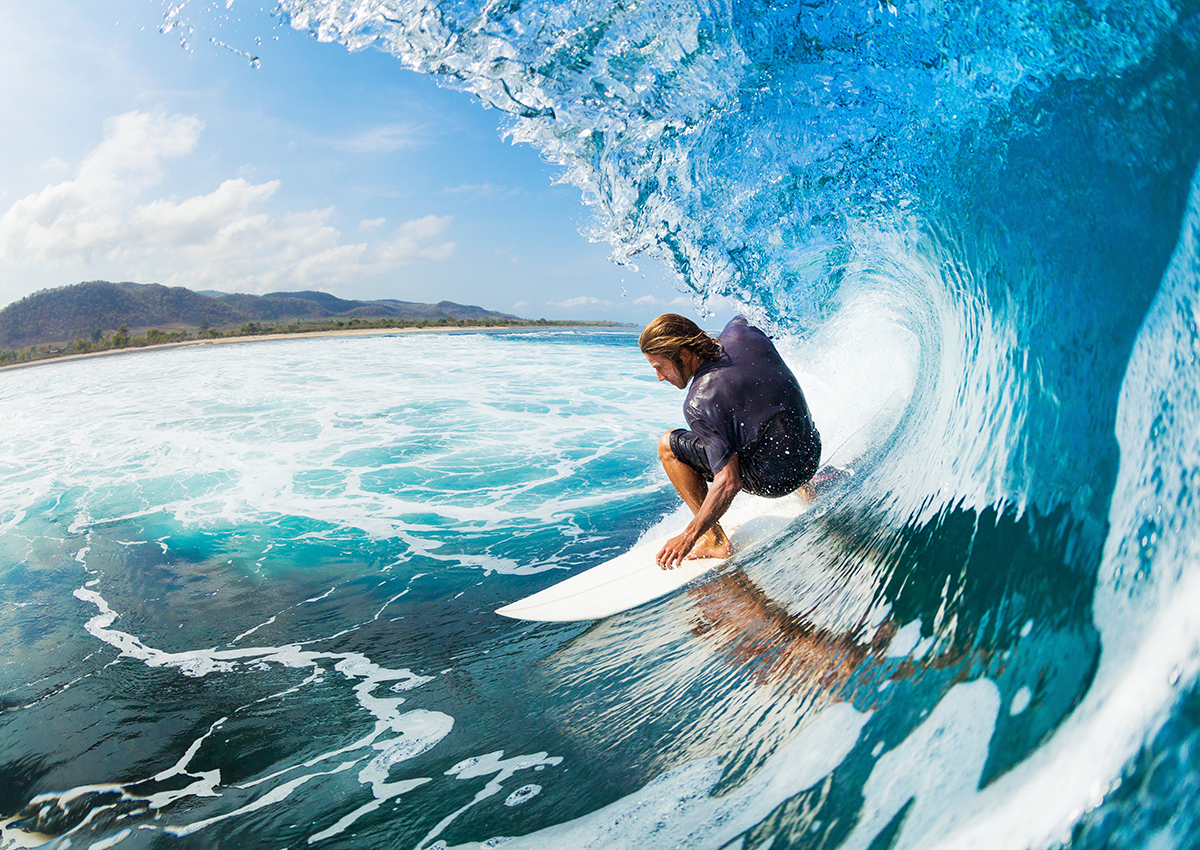Surfers represent a diverse culture based on riding the waves. Some people practice surfing as a recreational activity while others make it the central focus of their lives. Within the United States, surfing culture is most dominant in Hawaii and California because these two states offer the best surfing conditions. However, waves can be found wherever there is coastline, and a tight-knit yet far-reaching subculture of surfers has emerged throughout America.
Some historical markers of the culture included the woodie, the station wagon used to carry surfers’ boards, as well as boardshorts, the long swim shorts typically worn while surfing. Surfers also wear wetsuits in colder regions. The sport of surfing now represents a multibillion-dollar industry especially in clothing and fashion markets.
The World Surf League (WSL)runs the championship tour, hosting top competitors in some of the best surf spots around the globe. A small number of people make a career out of surfing by receiving corporate sponsorships and performing for photographers and videographers in far-flung destinations; they are typically referred to as freesurfers.
When the waves were flat, surfers persevered with sidewalk surfing, which is now called skateboarding. Sidewalk surfing has a similar feel to surfing and requires only a paved road or sidewalk. To create the feel of the wave, surfers even sneak into empty backyard swimming pools to ride in, known as pool skating. Eventually, surfing made its way to the slopes with the invention of the Snurfer, later credited as the first snowboard. Many other board sports have been invented over the years, but all can trace their heritage back to surfing.

Many surfers claim to have a spiritual connection with the ocean, describing surfing, the surfing experience, both in and out of the water, as a type of spiritual experience or a religion.
Three major subdivisions within standing-up surfing are long boarding and short boarding and these two have several major differences, including the board design and length, the riding style, and the kind of wave that is ridden. In tow-in surfing (most often, but not exclusively, associated with big wave surfing), a motorized water vehicle, such as a personal watercraft, tows the surfer into the wave front, helping the surfer match a large wave’s speed, which is generally a higher speed than a self-propelled surfer can produce.
Surfing-related sports such as paddle boarding and sea kayaking do not require waves, and other derivative sports such as kite surfing and windsurfing rely primarily on wind for power, yet all of these platforms may also be used to ride waves.





To create the feel of the wave, surfers even sneak into empty backyard swimming pools to ride in, known as pool skating. Surfers represent a diverse culture based on riding the waves.
A great article, I love the way of your thinking. I’m get inspired of new trips in this summer. Try it now and thank you so much. Hope that you will have more interesting articles in the future
Surfing-related sports such as paddle boarding and sea kayaking do not require waves, and other derivative sports such as kite surfing and windsurfing rely primarily on wind for power